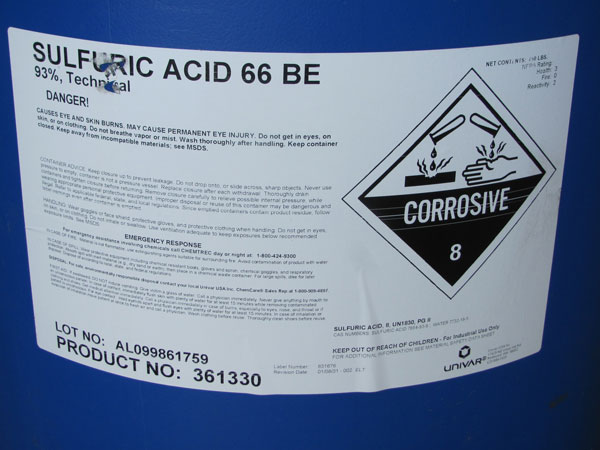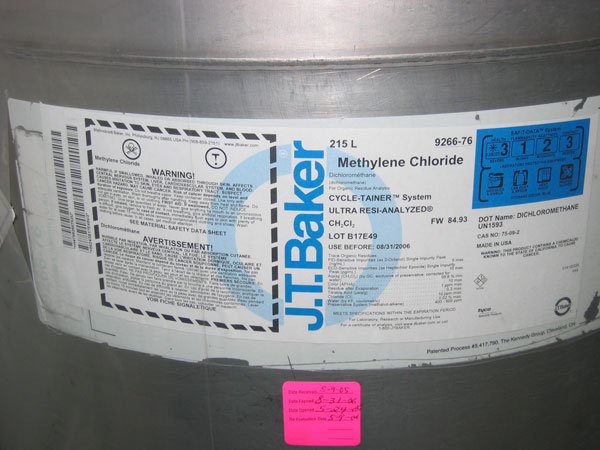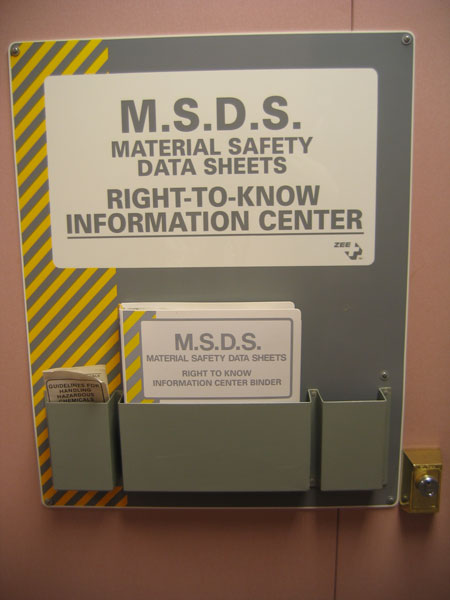By Eric G. Bachman
In March 2012, the Occupational Safety and Health Administration (OSHA) promulgated a final rule affecting the Hazard Communication Standard (HCS – 29 CFR 1910.1200). The rule officially adopts applicable elements of the Globally Harmonized System (GHS) for the classification and labeling of chemicals. The new criterion affects chemical manufacturers, importers, and distributors, as well as employers who use chemicals. While the GHS directly applies to these groups, it also impacts the emergency services. GHS information has not been well communicated to the fire service. However, fire personnel must become familiar with the changes for enhanced preincident preparedness and effective postdispatch incident evaluation
The GHS was first created in 1992 as a result of the United Nations Conference on Environment and Development (UNCED). Its elements represent a global approach using a universal system for identifying chemicals and communicating their hazards. The GHS is not a regulation, standard, or mandate. It is an adaptable framework, or best practices methodology, for communicating the hazards of chemicals used in the workplace worldwide. The GHS is in varied stages of implementation across the globe as some countries adopted GHS elements years ago. Regulatory entities may select, adopt, and implement only elements of the GHS applicable to their authority.
The OSHA adoption affects millions of United States workplaces and employees. Initially adopted in March 2012, the rules became effective on May 25, 2012. The scope of the GHS is broad and OSHA’s adoption yields several benchmark dates for compliance implementation, some of which are years away. That, however, should not guide fire service training efforts towards “after-the-fact” learning. It will take time for fire service hazardous material training programs and manuals to be updated with GHS elements. These elements may be implemented and encountered well before compliance deadlines are reached. Therefore, the fire service must be proactive in learning how the OSHA-adopted GHS elements will affect hazardous materials recognition and interpretation competencies.
This purpose of this article is to provide a general overview of the OSHA-adopted GHS elements. It is not a comprehensive analysis. Hopefully, it will foster preincident coordination between fire departments and the facilities they protect to understand and coordinate hazard communication practices.
The Problem
There are challenges related to commodity labeling and data sheets in international commerce as regulations vary widely country to country. This can create difficultly for international companies to comply with end user country import regulations. There are also inconsistencies among some vendors in the development and content of Safety Data Sheets (SDS), as well as certain labeling criteria and presentations (Photos 1 and 2 are examples of differing label presentations).
These issues and inconsistencies can be problematic and translate into confusion and misinterpretation by users. Products, depending on where they’re from and where they’re going, can have multiple types of labels and SDSs with inconsistent hazard information. One of the caveats associated with adoption of the GHS is its variability based upon adoption by a country. While the goal of the GHS was to build uniform consistency, countries may adopt and implement only certain parts of the framework.

(1) An example of a container label in the workplace. Photo by author.

(2) An example of a container label in the workplace of different layout from Photo 1. Photo by author.
Major Changes
The GHS’s impact on United States chemical manufactures and workplaces is significant. Online and classroom training programs for workplace environmental safety and health staff are ongoing through a variety of sources.
There are a host of changes that are a part of the new HCS 2012. One is chemical hazard classification. The GHS provides specific criteria for classifying a materials health and physical hazards. A second change is standardized information and pictograms on labels. Third are changes to Safety Data Sheets (SDS). That is not a reference error, but rather an eventual transition from the
now commonplace Material Safety Data Sheet (MSDS) reference to SDS. The last change addresses initial employee training.
Some GHS elements are not in the regulatory scope of OSHA and fall under other regulatory jurisdictions. For example, OSHA does not have jurisdiction over environmental hazard labeling. While the GHS framework provides a standardized environmental hazard pictogram, it is not mandatory under OSHA labeling requirements. Other United Sates regulatory entities may chose to adopt relative GHS provisions in the future.
Hazard Classification and Definitions
Chemical manufactures will have to reclassify their products based upon updated hazard type definitions. This will require manufacturers to identify and compare chemical hazard data against the definitions and decide whether the chemical is hazardous according to the updated OSHA definitions. A hazardous chemical is one that presents a health hazard and/or physical hazard, and includes simple asphyxiants and combustible dusts.
The health hazard definition and classification was refined to include chemicals that cause acute toxicity through any exposure route:
- skin corrosion or irritation;
- serious eye damage or eye irritation;
- respiratory or skin sensitization;
- germ cell mutagenicity;
- carcinogenicity; reproductive toxicity;
- specific target organ toxicity (single or repeated exposure); or
- presents an aspiration hazard.
This criterion is further defined in HCS 1910.1200 Appendix A.
The carcinogenicity element is divided into two categories. A Category 1 carcinogen applies to those that are known or are probable to cause cancer. Category 2 chemicals regard suspected cancer-causing chemicals. Germ cell mutagencity and reproductive toxicity are two effects not previously listed in the HCS criteria. The category number will not appear on a product label, but rather on the SDS.
The revised HCS physical hazards classification includes explosives, flammables (gases, liquids, aerosols or solids); self-reactive materials, pyrophoric substances (liquid or solid); self heating materials; organic peroxides; corrosives; gases under pressure; and water-reactive materials. This criterion is further defined in HCS 1910.1200 Appendix B. Another physical hazard consideration is gases under pressure. This applies to compressed, refrigerated, liquefied, and dissolved gases.
Labels
A second significant change regards labels. In this context, labels are workplace-related, not transportation labeling, and are under the jurisdiction of OSHA (under 29 CFR 1910.1200). Labels for transportation are regulated by the U.S. Department of Transportation (DOT) (49 CFR Parts 172). Herein on out, labels will reference workplace and OSHA/GHS criteria.
The disparity in previous label formats and practices was a catalyst for adoption of the GHS label framework. The new labeling criterion consists of written, printed, or graphic information concerning the chemical hazards. This information is to be attached to the container of a hazardous chemical, or to the outside of the package. New labels will be comprised of six components. One component is the product identifier, which can be a name or number used for a hazardous chemical. The second component is the chemical originator and is to include the name, address, and telephone number of the manufacturer or supplier.
The third component includes hazard pictogram(s). This represents a significant change from previous practices in the United States. The GHS prescribes 9 pictograms. Some graphics have similarities to pictograms commonly viewed on transportation placards and labels. Others are new to the United States and fire service personnel should become familiar with their meaning.

Although GHS prescribes nine pictograms, eight are mandated in the new OSHA standard. The GHS explosion pictograph (Figure 1) applies to explosives, self-reactive chemicals, and organic peroxides. The compressed gas cylinder pictogram represents gases under pressure. The flame pictogram regards flammables, pyrophoric, and self-heating chemicals as well as those that emit flammable gases. The pictogram with an “O” surrounded by a flame represents oxidizers. The skull and cross-bones pictogram represents a chemical with acute toxicity. The pictogram showing damage to a hand and metal indicates a corrosive. The pictogram depicting a human torso is for chemicals that are:
- carcinogenetic;
- affect the respiratory system;
- are sensitizers;
- are both reproductive and target organ toxic, and
- mutagenic or aspiration toxic.
The exclamation point pictogram refers to irritants and dermal sensitizers. It also applies to materials that yield harmful acute toxicity, have narcotic effects, and present respiratory tract irritation. The last, non-mandatory pictogram is the environmental toxicity hazard, which features dead vegetation and aquatic life. This pictogram, however, is not within OSHA’s jurisdiction and therefore is not mandated under HCS 2012. However, although it is not OSHA-mandated, you may still encounter it.
Unlike placards and labels that can present varied hazard specific colors, pictogram constituent colors are standard. Each pictogram is a red-bordered diamond. When applied to a container, the pictogram border must be red. The internal graphic will be black and the background white. When the hazard pictogram is reflected on a Safety Data Sheet, the red border is not mandated (because of copying limitations). In the old labeling scheme, OSHA labels featured an orange background with a black border and black pictograms.
The fourth label element is a signal word that represents the hazard severity level. The GHS prescribes two signal words: Danger and Warning. Danger signifies the most severe hazards, whereas Warning is used for less severe hazards. These signal words do not replace those used in pesticide labeling. The U.S. Environmental Protection Agency (EPA) regulates pesticide labeling which can include one of three signal words: Danger, Warning, and Caution, depending on severity.
The fifth label component is a hazard statement. This describes the nature and degree of hazard. Hazard statements likely will be short, brief bullet points. Examples include “highly flammable,” “causes severe eye irritation,” and “may be fatal if inhaled.”
The last label component consists of precautionary statement(s). Precautionary statements are recommended measures to minimize or prevent adverse exposure effects. This information will typically address up to four categories, including prevention, response, storage, and disposal guidance:
- A Prevention precautionary statement example would be “keep away from heat, sparks, or flames.”
- For Storage, “keep from direct sunlight.”
- A Response precautionary statement example is “flush eyes for at least 15 minutes while holding eyelids open.”
- A Disposal precautionary statement is “dispose of contents in accordance with (specific) regulations.” (See Figure 10 example of GHS compliant label).

Safety Data Sheet
The third significant change to the OSHA HCS 2012 is the redesignation of the well-recognized Material Safety Data Sheet (MSDS) to Safety Data Sheet (SDS). The GHS SDS model includes 16 sections that are consistent with the American National Standards Institute (ANSI) MSDS format. Each section of the SDS is information specific and listed below.
Section 1 – Product identification and company identification. This section lists the name of the product and manufacturer name, address, and emergency telephone number.
Section 2 – Hazards identification. This section will list the GHS Hazard Classification, such as an oxidizing solid. It will include the appropriate pictographs and signal word, and will list the Hazard Statements and Precautionary Statements.
Section 3 – Composition/ingredient information. This section includes the chemical identify as well as other common names or synonyms. It should include the chemical abstract service number, ingredients, and their concentration ranges.
Section 4 – First aid measures. This section will outline the routes of exposure, symptoms, effects, and special treatment measures.
Section 5 – Firefighting measures. This section will reveal both appropriate and inappropriate extinguishing agents, special hazards, and personal protective equipment and precautions.
Section 6 – Accidental release measures. This section addresses special precautions, protective equipment, and emergency procedures. It includes applicable environmental precautions and methods and materials for product confinement and clean-up.
Section 7 – Handling and storage. This section addresses safe handling precautions and list special safe storage considerations, including incompatibilities.
Section 8 – Exposure control/personal protection. This section prescribes control parameters such as occupational exposure limit values. It may include engineering controls and individual personal protection measures and equipment.
Section 9 – Physical and chemical properties. This section will profile the products appearance and odor as well as define values specific to boiling point, flash point, flammability, specific gravity, and vapor density. It may also provide other temperature sensitivities and solubility.
Section 10 – Stability and reactivity. This section illustrates the chemical stability, including incompatible materials and conditions to avoid, such as shock or vibration.
Section 11 – Toxicological information. This section further delves into the likely routes of exposure and related symptoms. It will define delayed and immediate effects and list numerical values of toxicity.
Section 12 – Ecological information. This section reveals toxicity to the eco system. It includes the products persistence and degradability and other adverse effects.
Section 13 – Disposal considerations. This section provides information on safe handling, disposal methods, and the disposal of contaminated packaging.
Section 14 – Transport information. This section will provide information on proper shipping criteria such as the four-digit United Nations number, transportation hazard class(es), packing groups, and special precautions.
Section 15 – Regulatory information. This section will list product specific health and environmental regulations.
Section 16 – Other information. This can include a plethora of information not included in the previous sections. A common example for this section is the appropriate National Fire Protection Association (NFPA) 704 markings.
Please note that Section 12, 13, 14, and 15 are regulated by other entities and not enforced by OSHA.
Implementation Benchmarks
Several benchmarks have been established for implementation of the GHS framework. By December 1, 2013, employers must provide initial training to their employees on how to read SDS and new label formats.
This is regardless if they have received reclassified hazardous chemicals or updated SDSs. The purpose of this training is to prepare employers and employees for the eventual transition.
June 1, 2015 is the deadline for manufactures and distributors to reclassify and produce GHS compliant SDSs and labels. From June 1, 2015 through December 1, 2015, distributors may ship inventories using the old MSDS and labels. Full employer compliance is expected by June 1, 2016. What that means is that an employer must make changes to their hazard communications program and train their employees on understanding the new label elements and SDS format.
It is important to remember with regard to right-to-know compliance is that SDSs must be readily available (Photo 3 is of an accessible MSDS rack). An employee should not have to locate a supervisor to unlock a door or cabinet. SDSs are to be readily accessible in the workplace.

(3) An accessible MSDS center in a workplace. Photo by author.
OSHA’s adoption of GHS elements include more than what this article overviewed. Some fire departments will be affected by the new ruling when compliant SDSs are filed by facilities with annual their annual Tier II chemical inventory reports submitted in accordance with the Superfund Amendments Reauthorization Act (SARA), Title III. However, chemicals reported under the SARA legislation must meet inventory thresholds. Chemical inventories at sites that use, store, or manufacture hazardous chemicals below the reporting thresholds will not be reflected on a Tier II Chemical inventory report (See article March 1998 Fire Engineering, “Tier II Chemical Reports – A Pre-planning Resource”). Therefore, it is essential to be aggressive in preparedness efforts to ascertain what a facility utilizes regardless of quantity.
**
As subtle as these changes may appear, it is necessary to be cognizant for increased hazard recognition and effective interpretation. The broad scope of whom the new framework applies to may result in haphazard compliance. Some sites will quickly embrace and implement the new practices, whereas others will be reluctant, procrastinate, or not be aware. The implementation dates may seem distant, but now is the time for fire department training officers to prepare their personnel to recognize the new label and SDS content. It is also a good time to work with local business and industry to be included in their hazard communication plan efforts. The more you know about the facilities you protect, the better prepared you will be. Recognition and identification of hazardous materials is a basic competency. But basic does not mean unimportant.
For more information on the GHS visit http://www.osha.gov/dsg/hazcom/ghs.html . For more information on labeling see http://www.osha.gov/dsg/hazcom/appendix_c.pdf. And for a side-by-side comparison of the HCS 2012 against previous OSHA HCS data visit www.osha.gov/dsg/hazcom/side-by-side.html.
Eric G. Bachman, CFPS, a 30-year-veteran of the fire service, is former fire chief of the Eden Volunteer Fire/Rescue Department in Lancaster County, Pennsylvania. He is the hazardous materials administrator for the County of Lancaster Emergency Management Agency and serves on the local emergency planning committee of Lancaster County. He is registered with the National Board on Fire Service Professional Qualifications as a fire officer IV, fire instructor III, hazardous materials technician, and hazardous materials incident commander. He has an associate degree in fire science and earned professional certification in emergency management through the state of Pennsylvania. He is also a volunteer firefighter with the West Hempfield (PA) Fire & Rescue Company.

